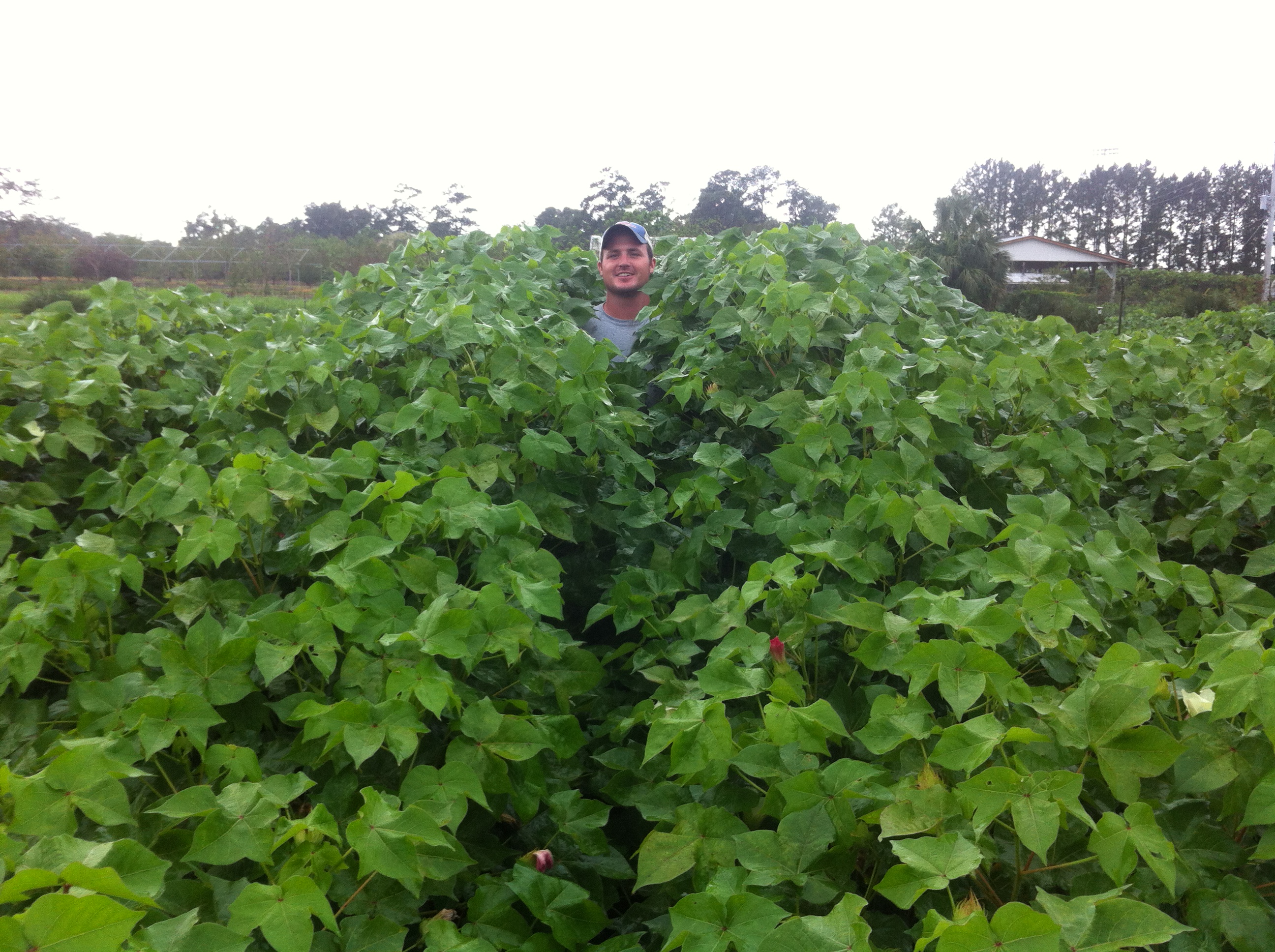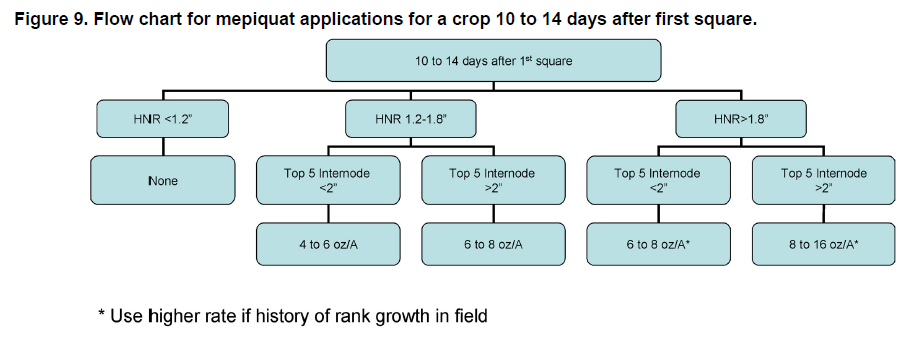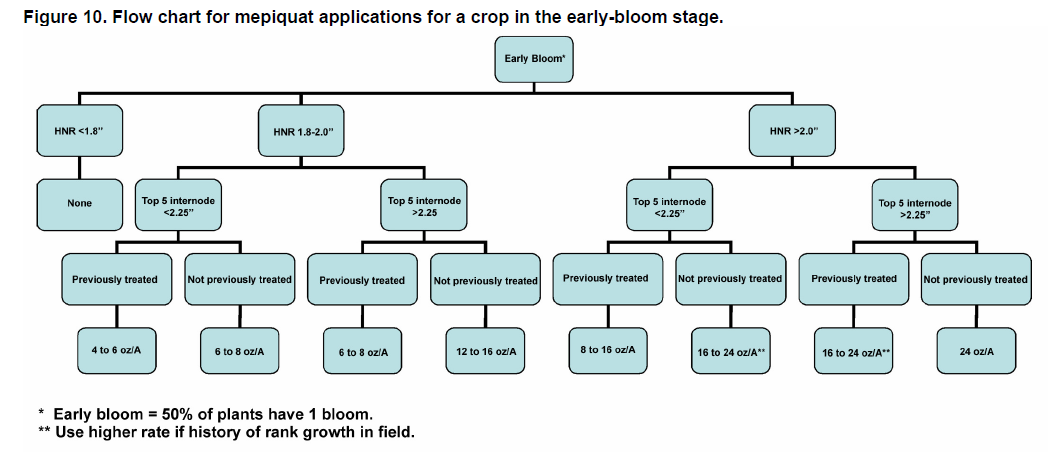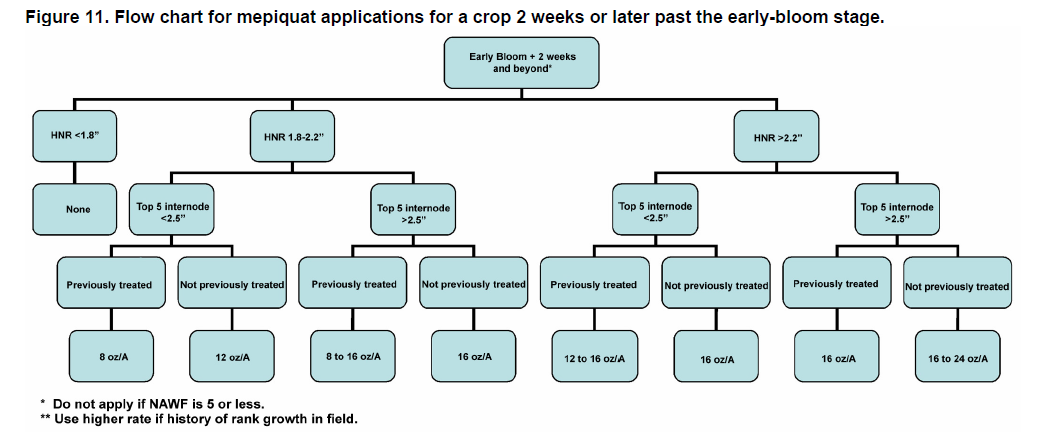Excessive rains across the panhandle the past week have many growers in a hurry-up-and-wait situation. Some cotton fields are in need of nitrogen or herbicide but are still too wet to operate in. An additional concern that cotton growers may have is the timely application of plant growth regulators (PGR’s).
Plant growth regulators can be a helpful tool for managing excessive growth of cotton. Without PGR’s, some varieties can grow very tall, which decreases harvesting efficiency. Additionally, taller cotton has a tendency to shade out lower developing bolls, which can cause fruit abortion and boll rot, thereby delaying maturity as new bolls are put on to compensate.
The most common PGR used in cotton is mepiquat chloride (Pix, Mepex, Mepichlor), but mepiquat pentaborate (Pentia) is also an effective chemical. Stance is another brand of PGR that contains double the rate of mepiquat chloride as well as the addition of cyclanilide. Plant growth regulators reduce vegetative growth by suppressing the formation of gibberellins which are plant hormones that are responsible for promoting cell elongation.
Determining if, when, and how much PGR to apply is a difficult decision. No PGRs are needed prior to first square. After that, the grower needs to decide whether or not to make an application based on variety, growth stage, rate of growth and most importantly, field history.
An effective way to determine growth stage is to measure the height-to-node ratio (HNR.) To calculate HNR, simply measure the height of a cotton plant and divide it by the number of mainstem nodes. For example, a plant 18 inches tall with 10 nodes has an HNR of 1.8. To get an average HNR, be sure to take at least 5 samples per field.
Below is a chart developed by University of Georgia cotton researchers for aid in making mepiquat applications based on growth stage. This chart uses height-to-node ratio (HNR) and the average length of the top 5 internodes. Use this flow chart for deciding the rate of mepiquat to use during pre-bloom, early bloom, and late bloom. This is simply a guide and should be used in consideration with other factors such as variety and field history.
Jost et al., 2006
For more information on PGRs see Use of Plant Growth Regulators as a Management Tool in Cotton or contact your local UF/IFAS extension agent.
- Carinata Starting to Come Up in Jackson County - December 12, 2014
- Wheat Production Considerations for 2014-2015 - November 10, 2014
- Peanut and Cotton Harvest Video 2014 - November 10, 2014




